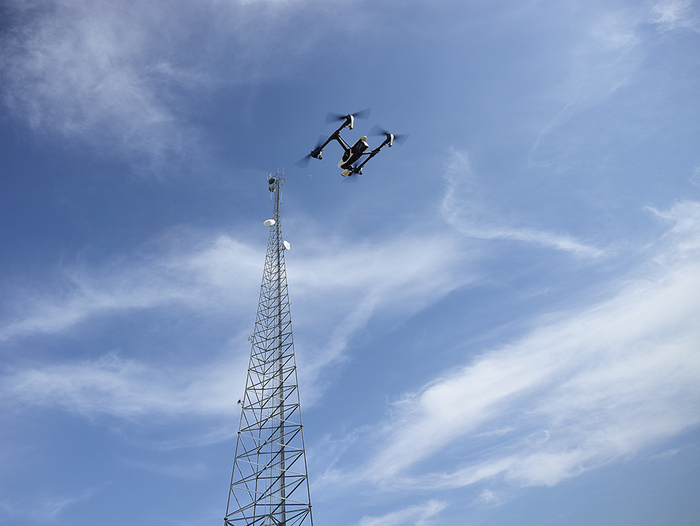Communications tower industry eyes benefits of drone use
A relatively new adopter of drones is the communications tower industry, which is beginning to see the benefit of utilising unmanned systems to inspect infrastructure more safely.
The US National Association of Tower Erectors (NATE) – which represents all aspects of the wireless and broadcast communications – is an advocate of the further use of said technology, claiming it can help reduce the number of tower inspections carried out by manned personnel, and in turn reduce the number of fatalities associated with this work.
“Historically, when tragedies occur while working in this industry, a lot of them are from falls,” Todd Schlekeway, executive director of NATE, says. “The industry has made great strides through the years…but the bottom line is when you are working at elevation there is a risk.
“Since 2003, the industry has tracked fatalities, and frankly there have been too many of them. There have been great strides, but we believe drone use in our industry can reduce that number even more.”
Schlekeway says that while there is a keen interest across the industry for drone use to aid safe inspection of infrastructure, the number of different stakeholders can at times slow this down.
This interest has been helped by the US Federal Aviation Administration’s 2016 introduction of its Part 107 ruling, which made the process by which commercial operations of drones can be carried out simpler.
Schlekeway says the regulatory environment is friendlier now, but the issue for this work is that there are a lot of layers involved, and all parties have to agree: “So those things still have to be streamlined in our industry for this to get to scale, and I think each year you are going to see more and more use.”
He stresses that this technology is not going to replace people’s jobs, rather ensure that tasks do not need to unnecessarily be carried out by personnel when they can more safely be undertaken by a drone.
“We feel like we are just scratching the surface now in our industry from a commercial drone utilisation standpoint,” he adds.
NATE is very much behind the further expansion of the use of drones in the industry, with all layers of the chain represented on its UAS committee. This includes contractors, telecoms providers, tower owners, construction companies, and UAS service providers and training organisations.
In the latter category is drone training and software provider Consortiq, which sits on the committee and is helping to shape and promote the safe integration of drone technology into the tower erector marketplace.
“Every one of those layers are enthusiastic, but there is protocol,” Schlekeway says. “This is an exciting time, because I think we are on the front end of this.”
